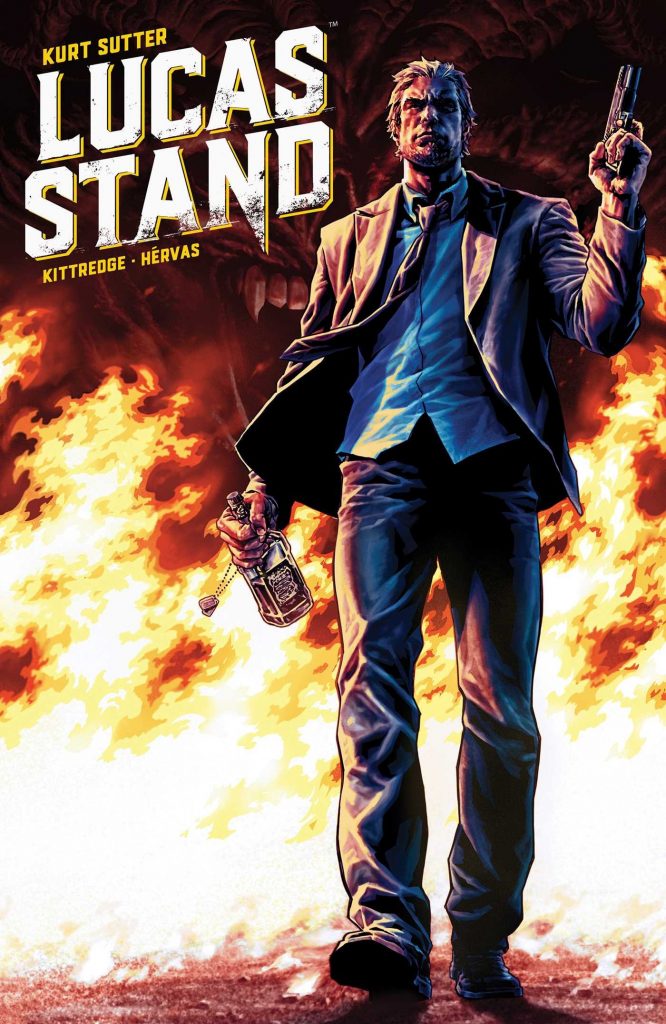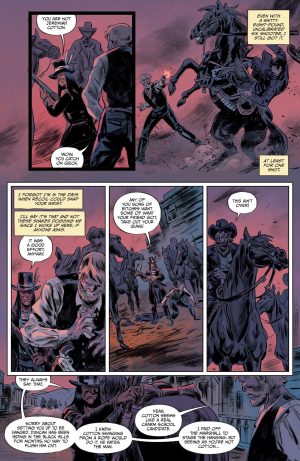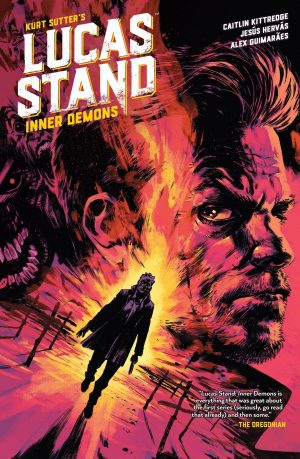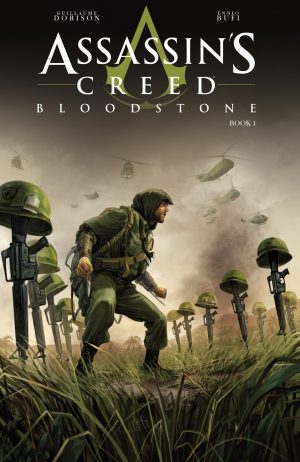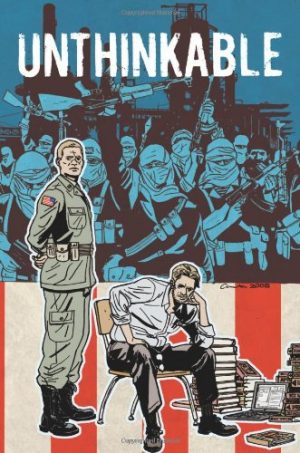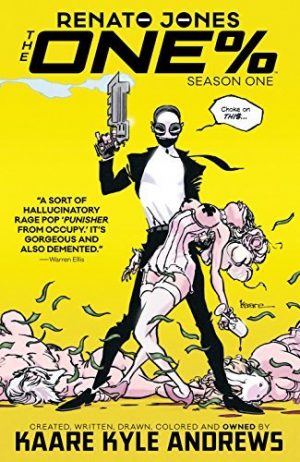Review by Ian Keogh
Kurt Sutter is the creative mastermind behind TV shows Sons of Anarchy and Mayans MC, a profile accounting for his name appearing above the title. With Lucas Stand, though, his inspiration is a TV show from an earlier generation, Quantum Leap, in which a man from the present possessed the body of someone in the past until a mission was completed. Stand, though, is a far surlier and conflicted character than Sam Beckett, has an advisor he can’t trust and between missions he returns home. As with TV series, the idea and direction is Sutter’s, but the writing is collaborative, Caitlin Kittredge also credited. Whatever the breakdown, the opening scene is as good as you’re likely to read anywhere concerning the troubles former soldiers who’ve seen combat have in adjusting to civilian life. It’s concise and powerful, signposting a great read ahead, promise raised when the concept is subsequently introduced. Lucas Stand’s experience as a man of action makes him an ideal recruit for higher forces who need agents to drop through the timestream to stop demon activity.
Unfortunately while Lucas Stand has a solid concept, it’s one that would work so much better with some actual movement, like as a TV series. Instead of that it has the static art of Jesús Hervás, who relies heavily on basic sketched details, figures and often blurred faces, coupled with unimaginative colouring from Adam Metcalfe. What should be thrilling just looks cluttered and dull, and a scene key to Stand’s subsequent guilt is very poorly laid out, not adequately explaining why a car drives through a barrier. It’s not the only place where Hervás could be clearer, and given the fantastic visual of Stand’s red spectacles able to reveal demons, he kills the opportunity.
It’s a great shame because Sutter and Kittredge construct their lead character with depth as a tormented man carrying a lot of guilt, and the scenes in the present day exploit that creatively, impacting on the past. The writers choose the eras he’s sent to with care, able to offer war story or western trappings with a demonic infusion, and other surprises as well. Wherever he tips up, it’s generally a period where the idea of human equality is low. The writers also drip more of the bigger picture with each mission, and have a clever way with a recurring cast, so that by the end the plot has moved forward considerably.
Were Lucas Stand drawn better it would be an intriguing series. As things are, it looks so ordinary it’s fair chance folk will put it right back on the shelf despite Sutter’s name. Surprisingly Hervás also draws Inner Demons, which follows.
